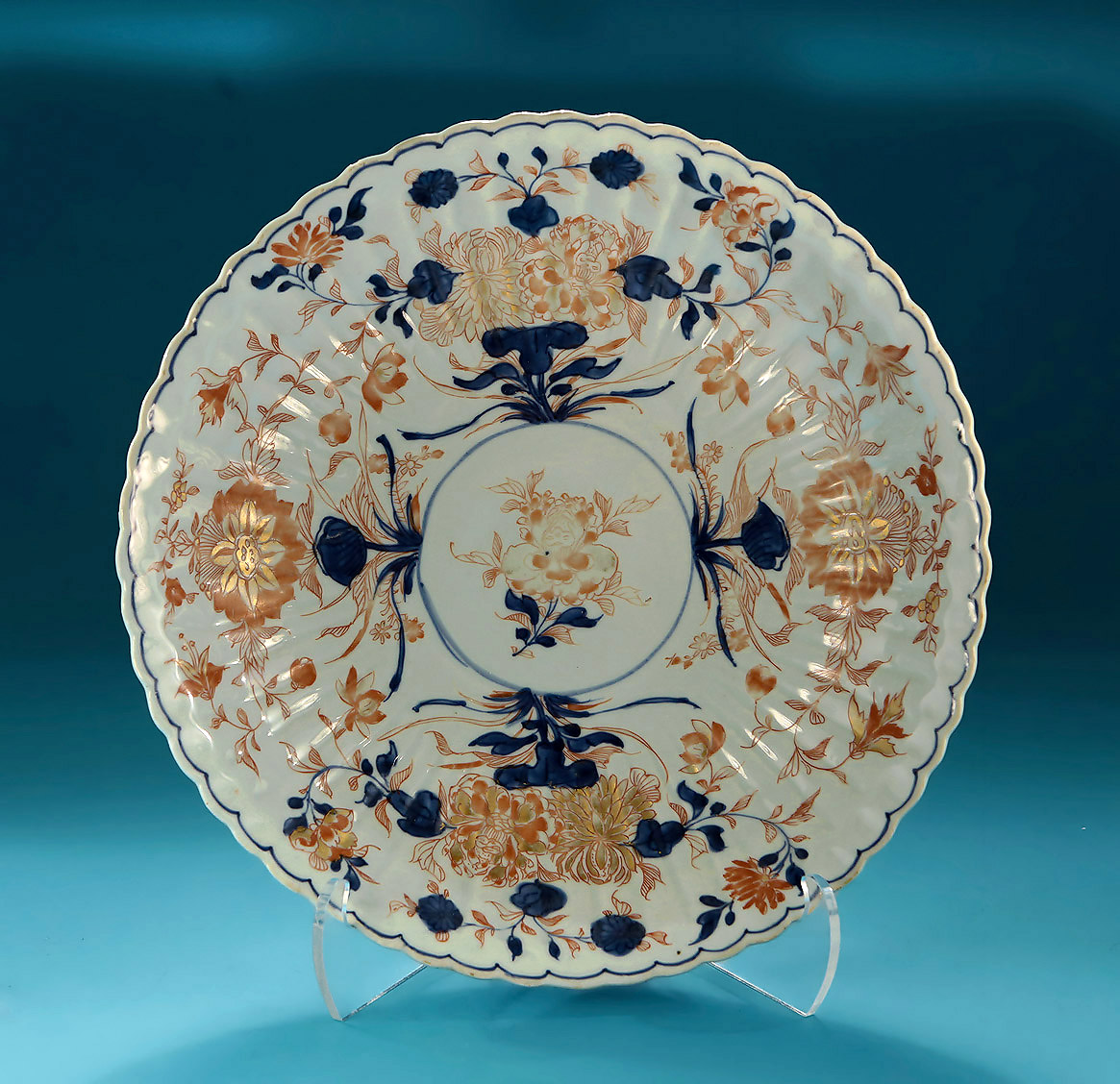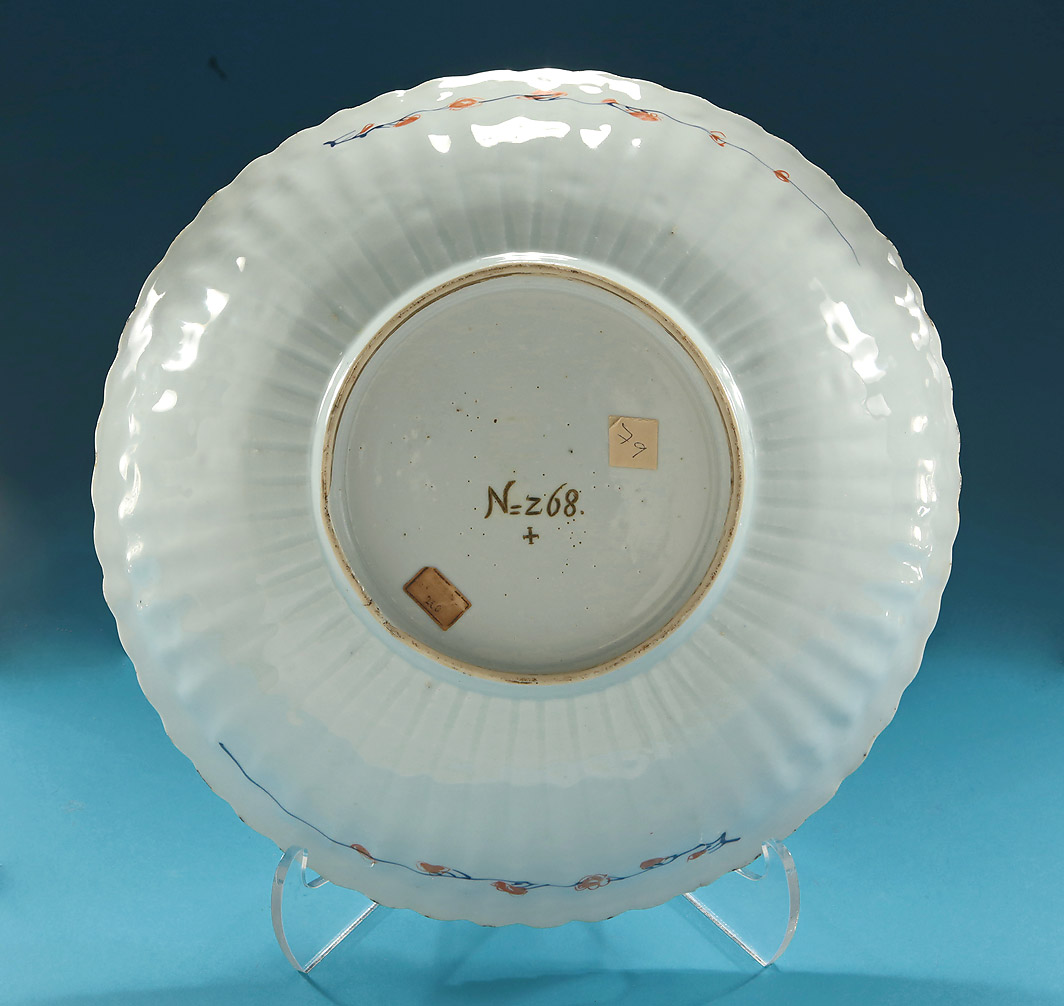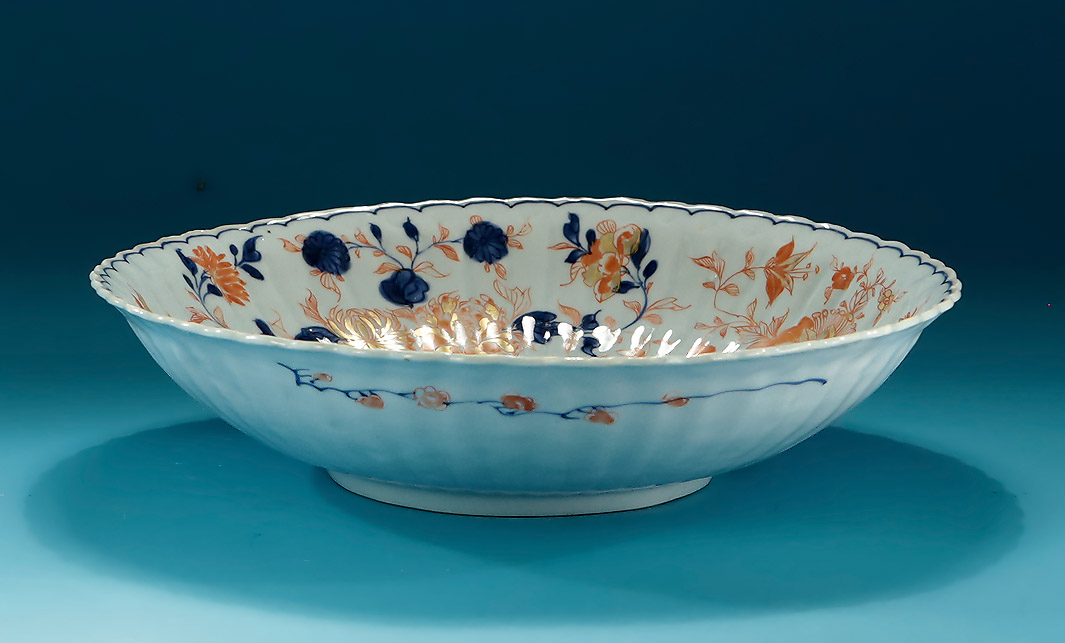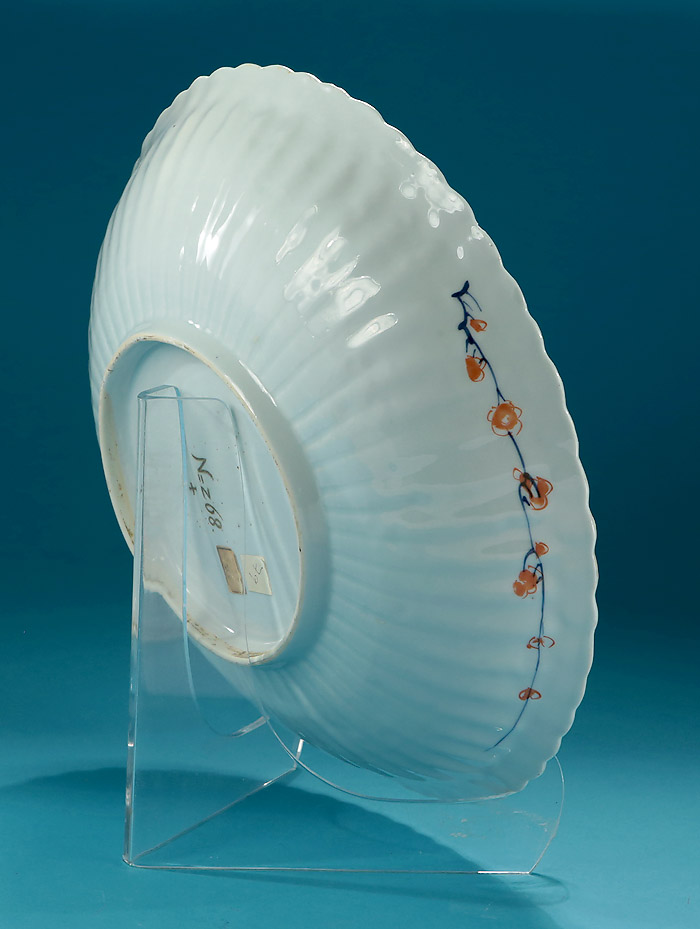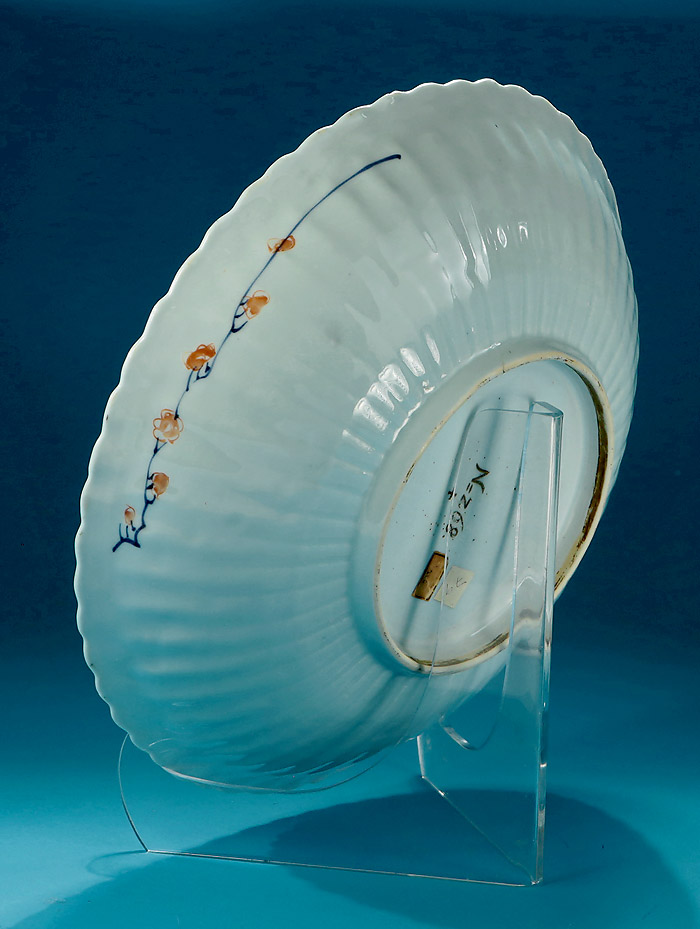|
The large round fluted and scalloped dish in the Chinese Imari palette, heightened with gilt,
the central roundel with a blooming peony surrounded by four further peoples and scattered floral sprays,
the verso with two long floral sprigs
the verso with wheel cut Johanneum inventory numbers N=268+
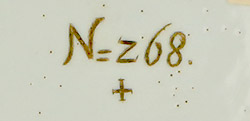
Provenance : Frederick Augustus I, the Strong (1670-1733)
Elector of Saxony and as Augustus II, King of Poland; Japanese Palace, Dresden
August the Strong is perhaps best remembered as :
a patron of the arts and architecture ;
the Royal Porcelain Collection, Dresden, established, 1715,
with its fine collection of Chinese, Japanese and German ceramics ;
and for the creation of hard paste porcelain itself for the western world.
In 1704, he approached 19-year-old Johann Friedrich Böttger, an alchemist
(one who attempts to make gold from base metals),
to find the secret of making gold to reduce his continual debts,
or
- the secret of the "hard paste" porcelain of the East.
At the time, Chinese hard paste porcelain was considered "white gold" -
so fine as to be a suitable gift for Kings or the Pope.
Böttger was placed under house arrest until the formula was found.
Successful white wares were being produced by 1708, stonewares by 1710,
porcelain by 1713 -
thus founding the Meissen Factory, in Saxony.
Such was Augustus' passion for Asian ceramics that he intended to dedicate an entire castle -
the "Japanese Palace" - to appropriately exhibit his porcelain treasures.
Even the first pieces leaving the Meissen factory reflected Asian tastes and artistry.
Unfortunately he died (1733) before his dream could be completely realized,
and the porcelain was packed away in the cellars of the still unfinished "Japanische Palace"
Johanneum Marks :
Inventory marks added to porcelain belonging to the collection of August the Strong.
The first inventory was made in 1721.
The inventory numbers were painted in black, or cut through the glaze with a glass cuter's wheel and blackened (as above).
In some cases the numbers have only been drawn in ink and have by natural causes washed away.
The term "Johanneum" was taken from the building in Dresden to which the royal collection was moved 1875-76.
Additional Note :
The "+" mark was given to those pieces considered at the time to be Japanese.
Scholarship, of course, has later proven many to be Chinese in origin.
Condition : Overall very good; without breaks or restoration; expected light fritting to the rim;
some wear to enamels and gilding
12" Diameter
#7047
SOLD
Please Inquire
|
